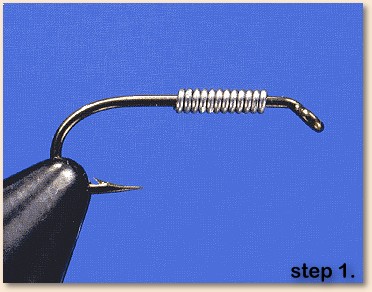
1. Cut a two-inch section of lead wire from the spool. Wind the wire
tightly without gaps around the hook to cover the front half of the
shank. Trim the excess and slide the wire over the thorax position.
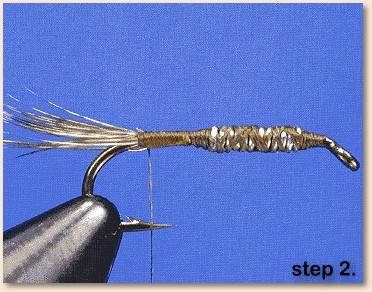
2. Start the thread behind the eye. Cover the shank with thread
binding the wire to the hook. Create a smooth thread taper on both
sides of the weight. Wrap the thread back to the bend. Tie in the
grouse fibers to build a tail. Then tie in the gold wire for the
ribbing.
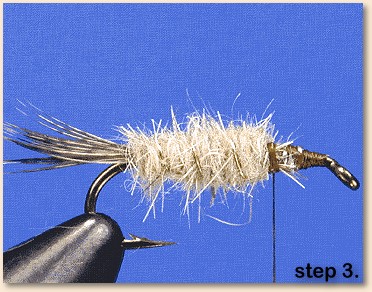
3. Wax the thread and dub an abdomen of #5 hare's mask fur
mixed with about 15% pink antron dubbing. Then counter-wrap
and trim the gold wire.
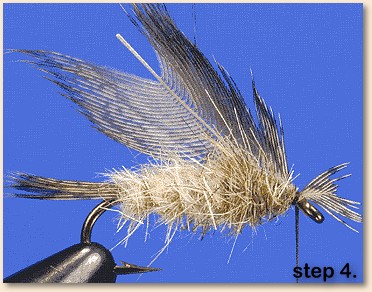
4. Dub the thorax using #2 hare's mask mixed with 10% pink Antron
dubbing and tie in a grouse back feather by the tip. Size the feather
so that the hackle collar extends to the hook point.
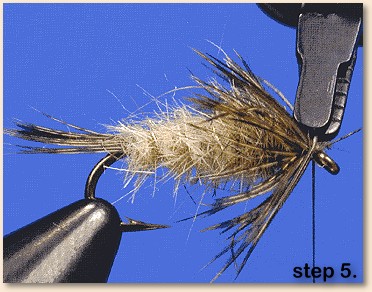
5. Wrap the feather to form the desired hackle collar. Trim the feather stem.
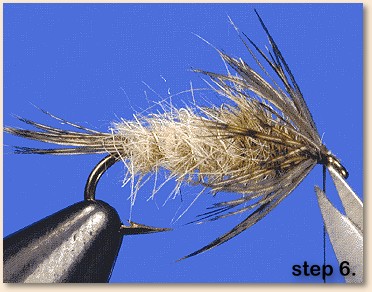
6. Build a thread head, whip finish and apply head cement. The
hackle collar may be fine-tuned by trimming any errant fibers with
a sharp pair of fine-tipped scissors or by plucking the fibers out
with your fingers. Trim them as close as you can to the fly.
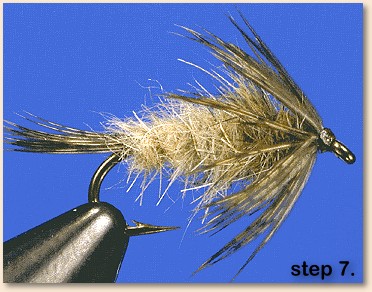
7. For a buggier fly pick out some fibers from the abdomen and
thorax with a bodkin.



